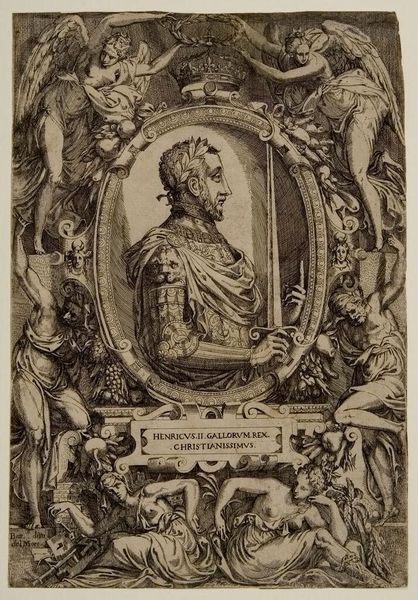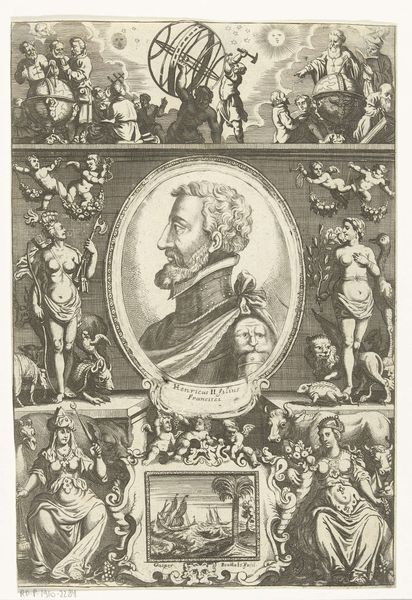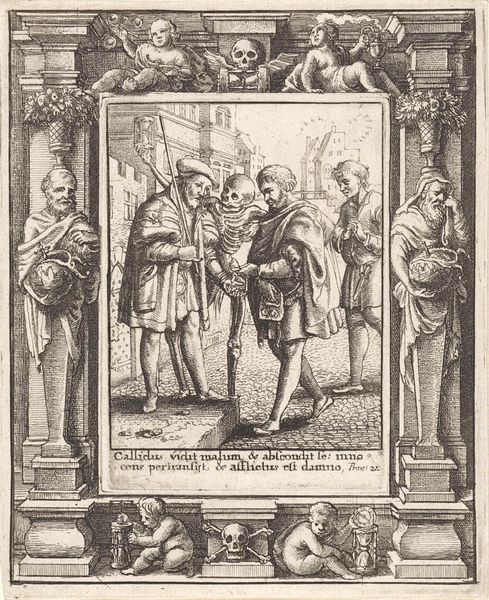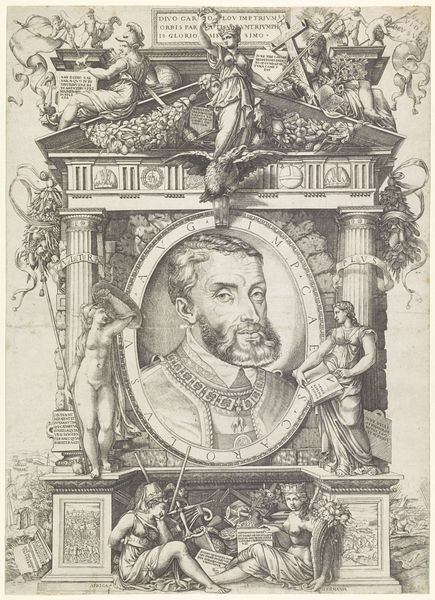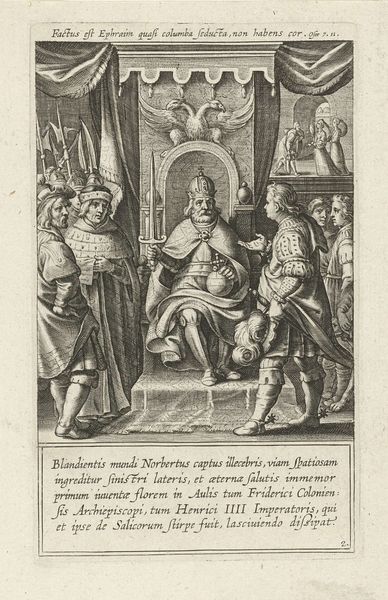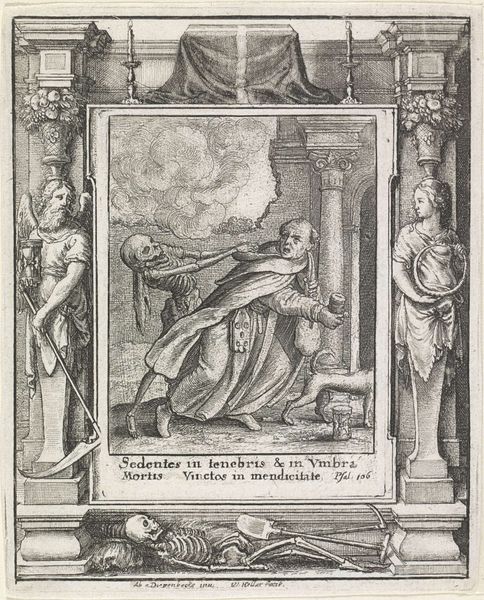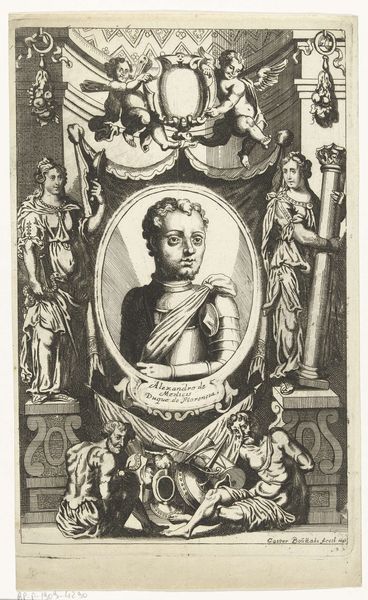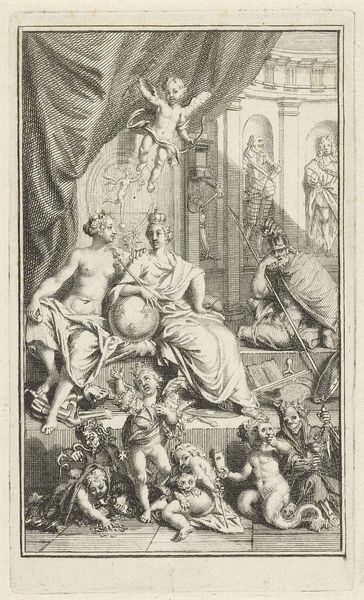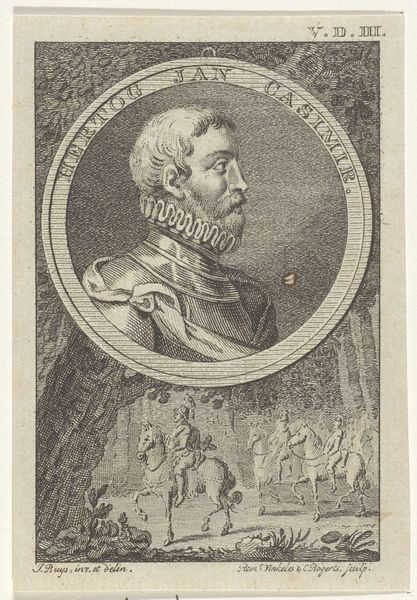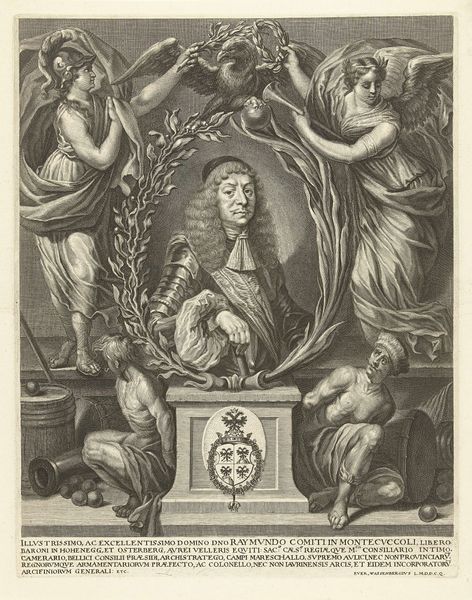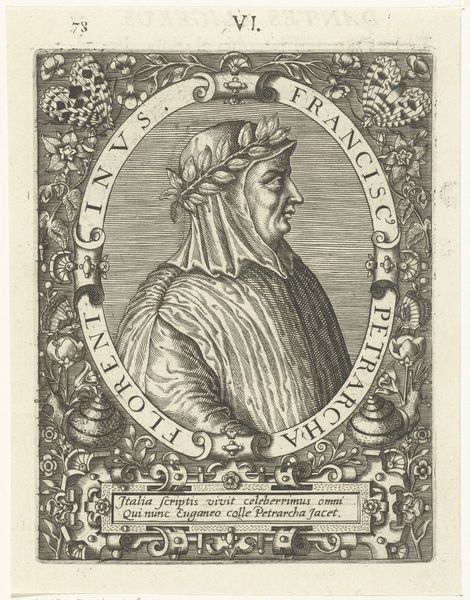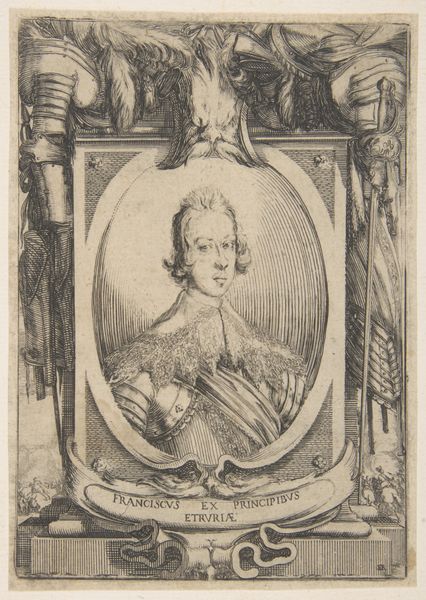
engraving
#
allegory
#
baroque
#
pen illustration
#
old engraving style
#
caricature
#
classical-realism
#
figuration
#
pen-ink sketch
#
surrealism
#
line
#
history-painting
#
academic-art
#
engraving
Dimensions: height 283 mm, width 185 mm, height 117 mm, width 84 mm
Copyright: Rijks Museum: Open Domain
Curator: This is a seventeenth-century engraving, dating from 1650 to 1695. The artist Gaspar Bouttats portrays King Ferdinand of Aragon, and it now resides in the Rijksmuseum. What strikes you immediately? Editor: A curious stiffness! Despite the surrounding allegory and theatrical presentation, the king's portrait remains strangely austere. It is as if he's peering into a different plane of existence. Curator: The engraving masterfully employs line. Consider how Bouttats achieves depth and texture solely through hatching and cross-hatching. The lines themselves have a graphic quality almost divorced from purely representational concerns. The medium limits value. Editor: True. The severe profile contrasts with the flowing drapery and angelic figures—visual shorthand that constructs Ferdinand’s cultural memory. He is framed as learned, powerful, perhaps even divinely ordained if we examine how he has been elevated near to the classical deity above. I can not help but think that we also read something ominous here, with the satyr looming. Curator: Notice how the portrait oval sits within a broader rectangular composition. The geometry creates a structured space wherein we, as viewers, can interpret the elements' relations with greater clarity and intentionality. It's not simply a portrait; it's a visual theorem. Editor: Indeed, but those classical figures, though balanced on either side, serve symbolic purposes. Athena represents wisdom and warfare while the reclining river god symbolizes the dominion over territories, the lifeblood and lands which give him strength and domain. Those are symbols meant to bolster Ferdinand's image. Curator: Undoubtedly. What is compelling about this particular piece of engraving is how, despite the presence of allegory, the abstract qualities of line and form persist. These lines define space as well as represent. Editor: The lasting cultural memory here appears designed to amplify a king’s symbolic resonance across eras. What could a formal deconstruction even reveal about the actual monarch and his lived experience? Curator: Precisely. Even when depicting something "real", as in portraiture, the hand of the artist and engraver re-shapes reality itself. Editor: And reveals a deeper symbolic realm lurking beneath the surface. It certainly leaves one contemplating power and image across the ages.
Comments
No comments
Be the first to comment and join the conversation on the ultimate creative platform.
